The Art of the Post: The Genuine Cowboy Artist
Read all of art critic David Apatoff’s columns here.
Cowboy stories were always popular with readers of The Saturday Evening Post. Several different artists were called upon to imagine the wild west for these stories, but none painted the old west as authentically as the great Harold von Schmidt.
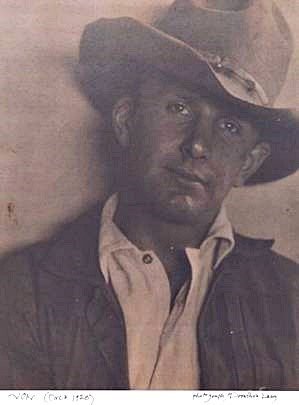
Von Schmidt was a “leather-skinned Westerner with a lean, tanned face, a Will Rogers cowlick and eyes that seem to be focused on the horizon,” as described in his monograph from the Institute of Commercial Art. He was born in rural California in 1893, and, after being orphaned at age five, spent his early years exploring what he called “the last of the old west.” He recalled, “I had more freedom than most boys—the freedom of being forgotten…. Tactful forgetting is a fine thing for children. Being on their own gives them the initiative to succeed in a land of free enterprise.”
On his way to succeeding, von Schmidt worked as a cowhand, a lumberjack, a mule driver and a construction worker on a dam. He went down to the Mexican border where he met Pancho Villa’s ragged bandits. He learned about cattle and horses the hard way, as a working cowboy on long trail drives.
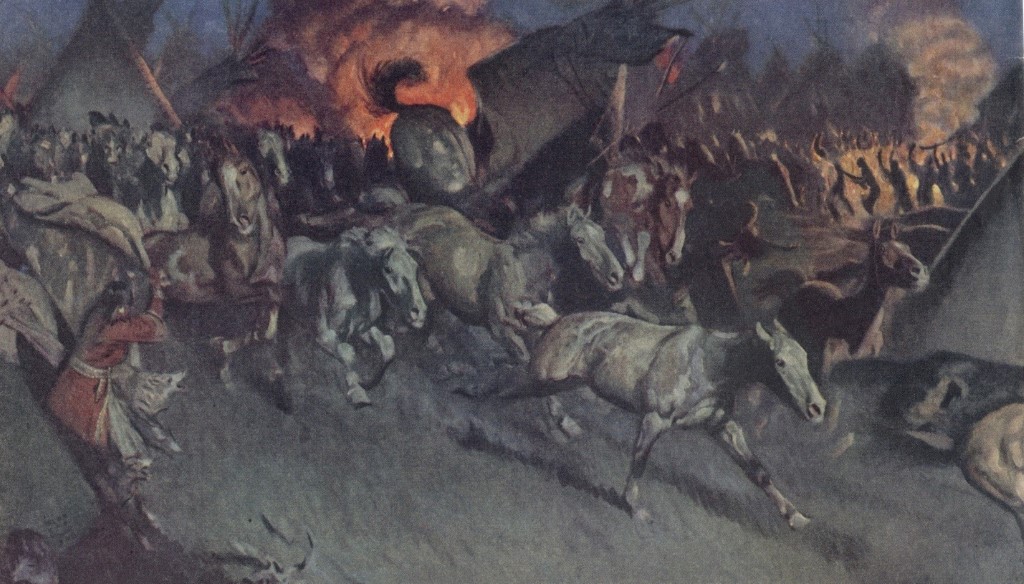
He also broke his neck twice, as well as half a dozen other bones, and dislocated his shoulder. On the good side, he once had lunch with the real Buffalo Bill.
Von Schmidt loved to draw and often kept a sketchbook with him. One day he met the famous western artist Maynard Dixon. Von Schmidt blurted out, “I’m trying to paint. I like the things you do.” Dixon did not give art lessons, but he was looking for a model and a studio assistant. He hired von Schmidt, and they soon formed a bond that changed the direction of von Schmidt’s life.
Dixon was impressed when he saw von Schmidt’s artwork. He said, “They’re a good deal better than I was doing at your age.” He spent a year coaching von Schmidt on how to improve his work.
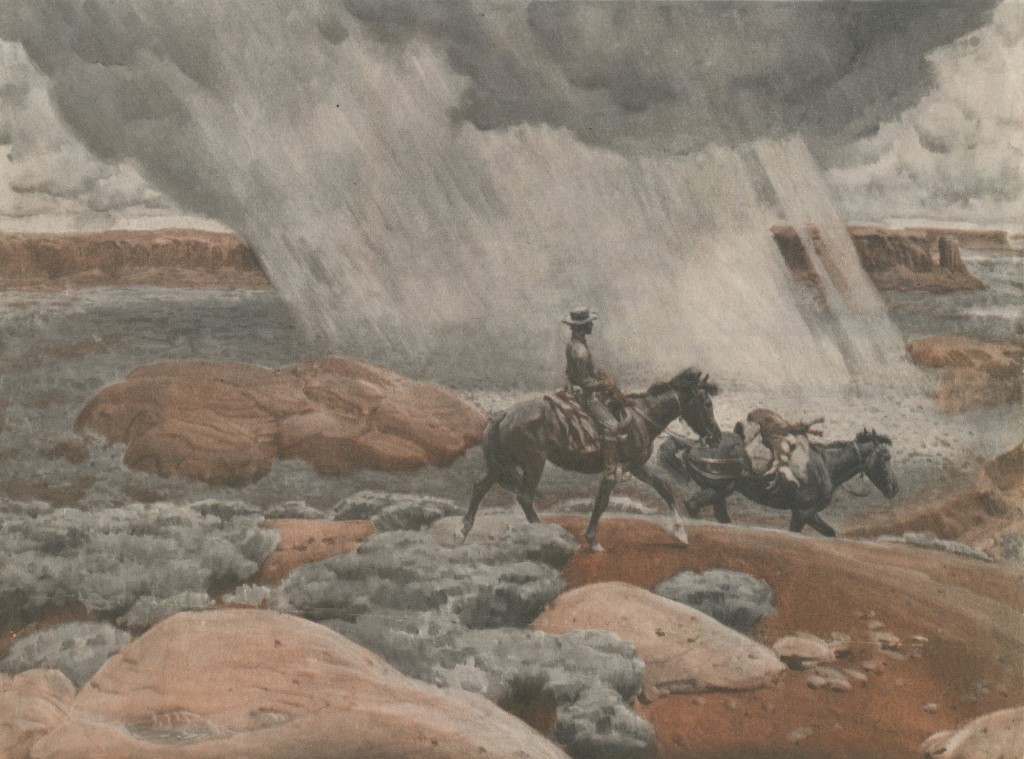
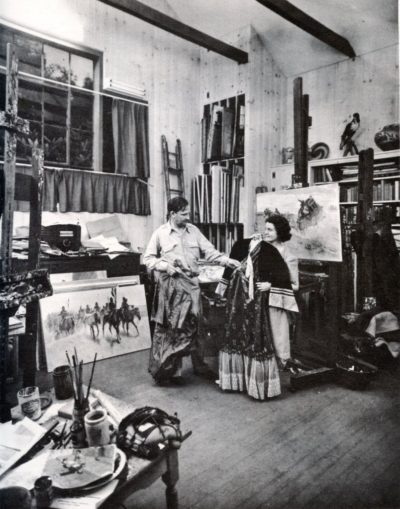
In 1924 von Schmidt moved to New York in the hope of becoming a professional illustrator. He took his western artifacts and his ten gallon hat with him. In New York he met his wife, raised a family and became a highly successful illustrator.
For decades he was one of the lead illustrators for the Post. He painted a wide variety of subjects, but he was most famous for his illustrations of the old west. His pictures had an authenticity that you could not get from sitting in an art school; it was the kind of authenticity that you acquire from being thrown off a horse and landing on the hard ground.
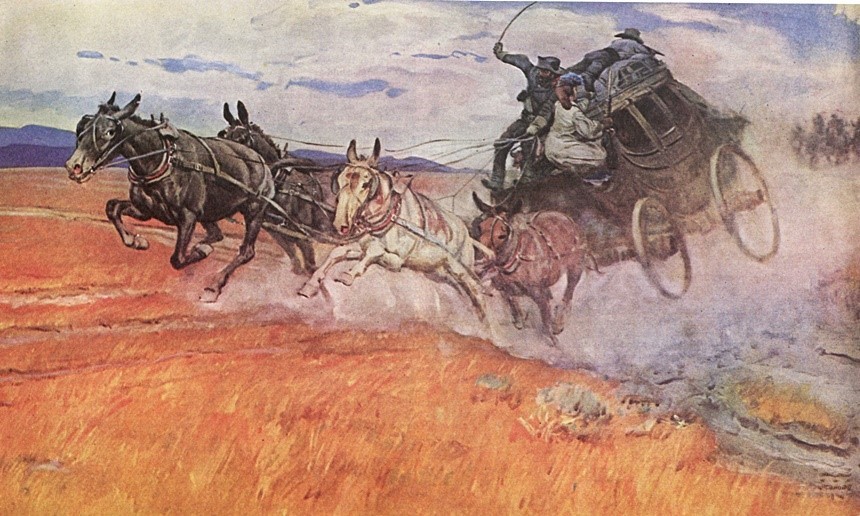
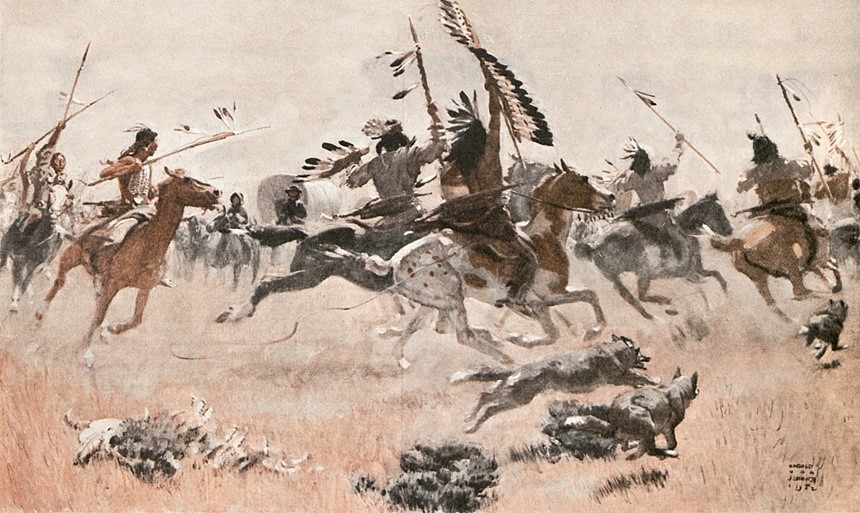
He went on to become the president of the Society of Illustrators, vice president of the Artists’ Guild, and a founding member of the Famous Artists School. In 1959, he was elected to the Society of Illustrators’ Hall of Fame.
Later in life, after von Schmidt had moved to a large home in a prosperous Connecticut suburb, he looked around and remembered, “Once, I said to Maynard Dixon, who did so much for me, ‘Maynard, I’ll probably never have any money. How can I repay you?’ Dixon answered, ‘You can paint fine pictures and pass the word along.’” Von Schmidt tried to honor that standard throughout his career.
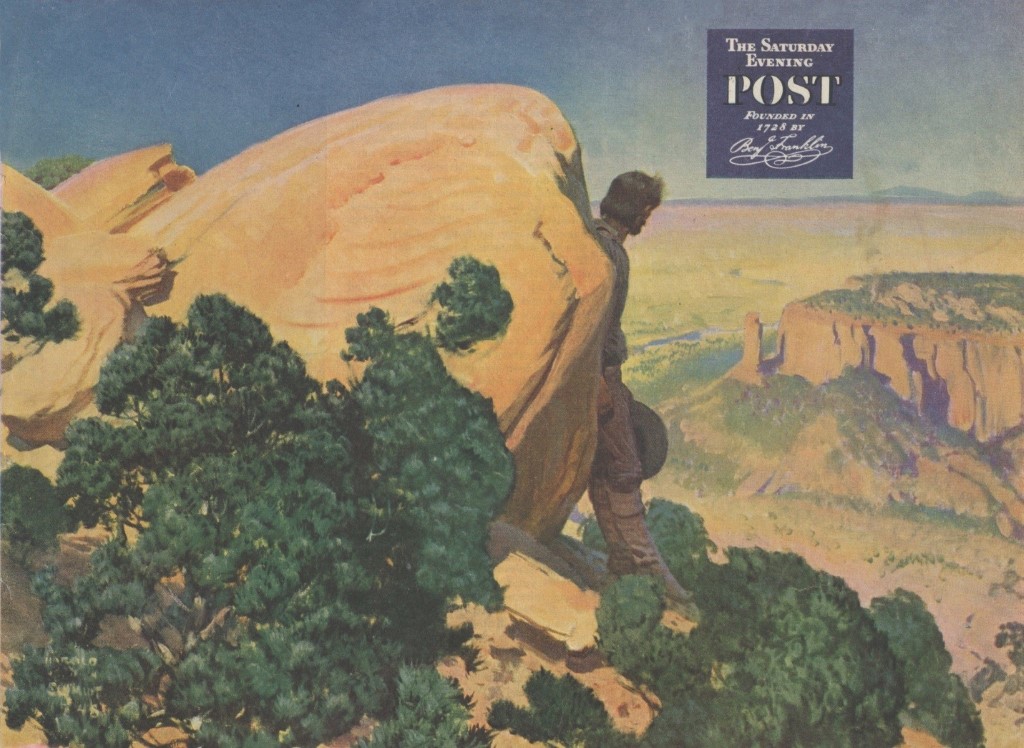
Classic Art: Story Illustrations, Part 1
By Harold Von Schmidt
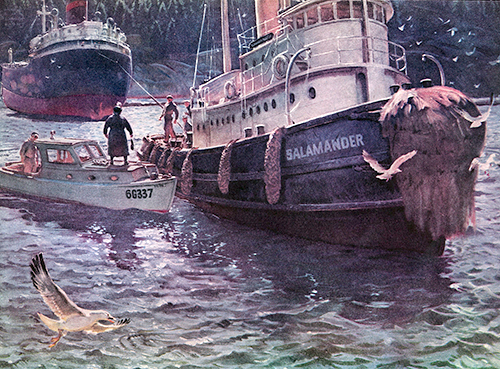
“The word that she was to have a new boss—name of Bullwinkle—almost drove Tugboat Annie crazy. And as someone said: ‘When Annie acts crazy, somebody’d better start ducking!’” Yes, that unsinkable character Tugboat Annie began in The Saturday Evening Post. This illustration by Harold Von Schmidt leads to the question: whatever happened to these great paintings? But that’s another story. The caption reads: “‘Hey, Bullwinkle, ye wind-geared jackass!’ was Annie’s unladylike greeting. ‘Whyn’t ye get out an’ push?’” Gotta love her.
By Sam Bates
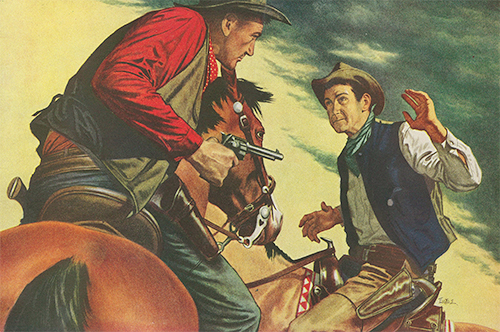
I wish I could count all the western stories that appeared in the Post over the years. This was “Gunslick” by Richard Wormser from 1954. The caption to artist Sam Bates’ illustration reads “Jack Gannon brought his hand too close to his gun, and Mel’s own iron was out and pointing. ‘You were saying, Mr. Gannon?’”
By Bob Hilbert
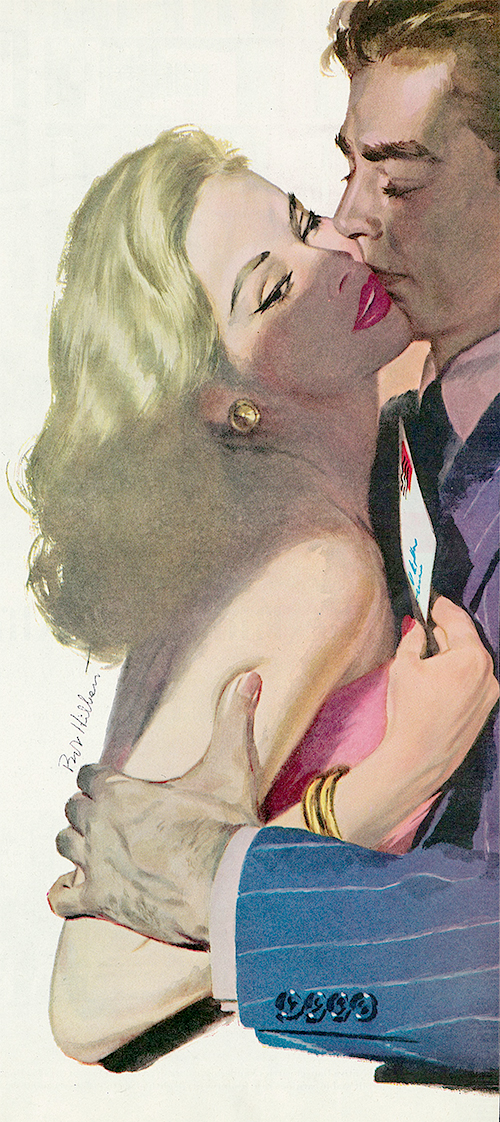
Sometimes I don’t know if it’s the artwork or the captions that grab me. The story is “Larcenous Lady” by William Fay from 1953 and the caption to the sexy illustration by artist Bob Hilbert says, “When he kissed her gently, she clung to him, murmured his name. He didn’t know she was also picking his pocket.” For more steamy images from romance fiction, see our Featured Artist piece on “Leading Ladies.” I’ll do more of these in the future.
By Amos Sewell
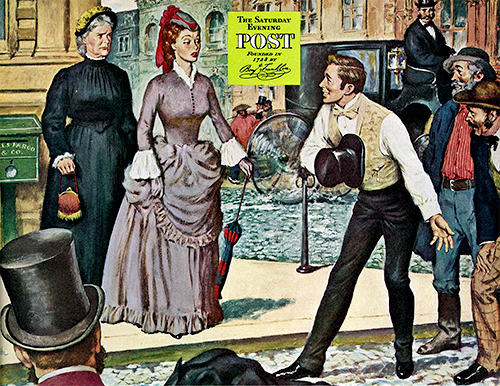
I have to show two illustrations from the 1953 story “The Dangerous Angel” by Clarence Budington Kelland. This lovely illustration has the caption: “‘Madam,’ said the young man, ‘nothing could make you more conspicuous than God and nature already have done.’” Oh, brother. As pick-up lines go, that one stinks. And… did he throw his jacket down for her?
By Amos Sewell
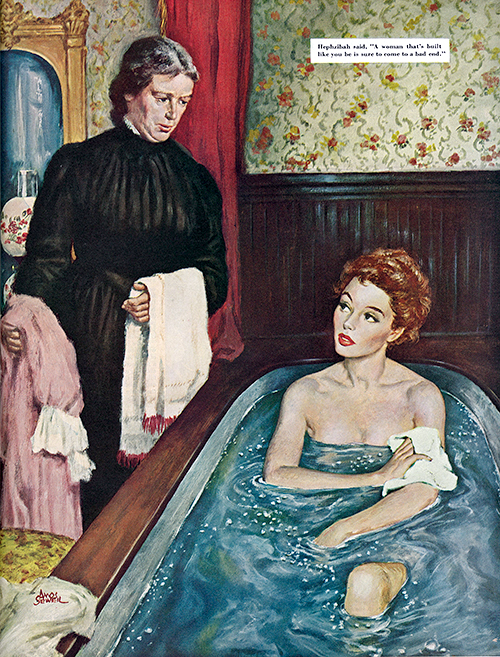
The artwork here and above from “The Dangerous Angel” was by Post cover artist Amos Sewell. His covers tended to be a bit more wholesome. This caption reports, “Hephzibah said, ‘A woman that’s built like you be is sure to come to a bad end.’”
By James Bingham
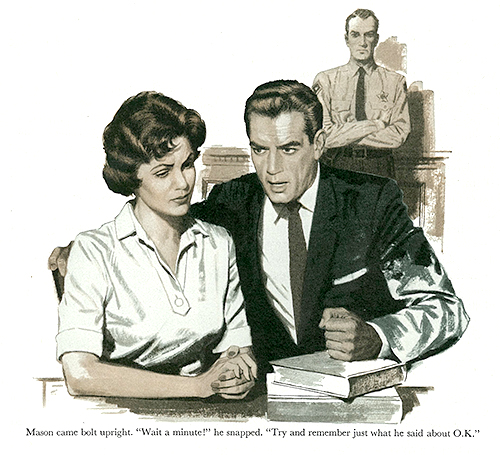
Yes, boys and girls, the decades of the 1940s through ’60s brought many a Perry Mason story to Saturday Evening Post readers. This 1959 Erle Stanley Gardner serial was “The Case of The Waylaid Wolf.” Perry, at least according to the caption, is losing patience: “Mason came bolt upright. ‘Wait a minute!’ he snapped. ‘Try and remember just what he said about O.K.’”
More story illustrations coming up soon.